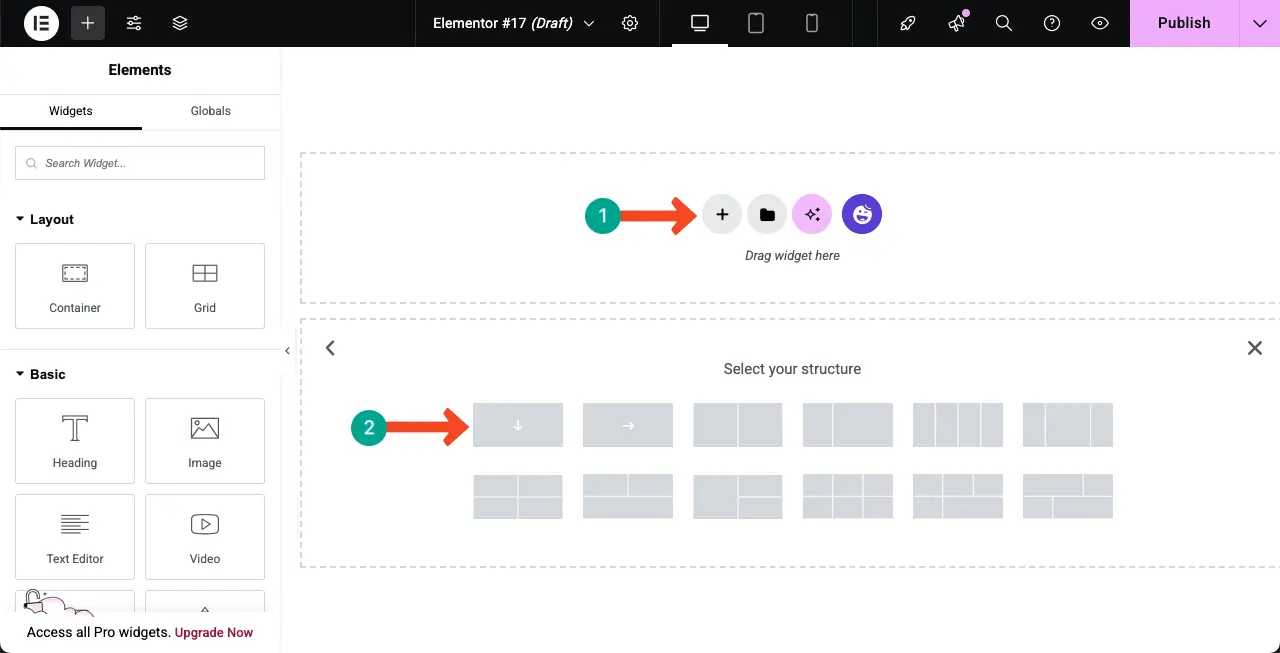1、Teigha中DWG数据库结构:

经常用到的有TextStyleTable、LayerTable、LinetypeTable、BlockTable及其对应的TextStyleTableRecord、LayerTableRecord、LinetypeTableRecord、BlockTableRecord及Entity。
具体使用
2.1添加引用
使用前应该添加TD_Mgd_3.03_9.dll或是其他版本类库,类库分为64位与32位,32位类库在64位系统上运行效果可能不太好。3.02版本及一下版本可能没有64位的类库。
命名空间有:
Teigha.DatabaseServices;
Teigha.Geometry;
Teigha.Colors;
Teigha.Export_Import;
Teigha.GraphicsInterface;
Teigha.GraphicsSystem;
Teigha.Runtime;
3.02及以下版本命名空间应将Teigha换为DWGdirect。
2.2打开、新建、保存数据库
使用之前应加上这个:
using (Services ser = new Services())//一个应用程序加上一个就行了,否则出错
- 打开数据库(dwg文件)
using (Database pDb = new Database(false, false))//不加参数会出错
{
pDb.ReadDwgFile(Application.StartupPath + “\\TABMENU.dwg”, FileOpenMode.OpenForReadAndWriteNoShare, false, “”);
}
- 新建数据库
using (Database pDb = new Database())//加参数出错
- 保存
- 保存格式
SaveType pSavetype = SaveType.Save12; //Save12为.dwg Save13为dxf
默认保存为dwg,可以不用指定。
- 保存版本类型
DwgVersion dwgver = DwgVersion.vAC18; //ACAD2010为vAC24;ACAD2007为vAC21;ACAD2004为vAC18;
很重要,保存时要用,版本过高时低版本AutoCAD不能打开。
- 保存
pDb.SaveAs(filename, dwgver);
pDb为数据库(Database),filename为dwg文件名,dwgver为版本。
2.3写数据
2.3.1添加文本样式
ObjectId styleId = ObjectId.Null;
using (TextStyleTable pStyles = (TextStyleTable)pDb.TextStyleTableId.GetObject(OpenMode.ForWrite))
{
//文本样式记录
using (TextStyleTableRecord pStyle = new TextStyleTableRecord())
{
// 表对象(记录)添加到表之前必须命名
// isShapeFile flag must also be set (if true) before adding the object
// to the database.
pStyle.Name = styleName;//必须设定
pStyle.IsShapeFile = isShapeFile;//添加(记录)到数据库之前必须设定(如果为true)
// Add the object to the table.添加对象(记录)到表
styleId = pStyles.Add(pStyle);
// 设置剩下的属性。(可以添加后设置也可以添加之前设置)
pStyle.TextSize = textSize;
pStyle.XScale = xScale;
pStyle.PriorSize = priorSize;
pStyle.ObliquingAngle = obliquing;
pStyle.FileName = fileName;
if (isShapeFile)
pStyle.PriorSize = 22.45;
if (!string.IsNullOrEmpty(ttFaceName))
pStyle.Font = new FontDescriptor(ttFaceName, bold, italic, charset, pitchAndFamily);
return styleId;
}
}
注:pDb为Database
2.3.2添加线型
using (LinetypeTable pLinetypes = (LinetypeTable)pDb.LinetypeTableId.GetObject(OpenMode.ForWrite))
{
//线表记录
using (LinetypeTableRecord pLinetype = new LinetypeTableRecord())
{
pLinetype.Name = name;//必须命名
ObjectId linetypeId = pLinetypes.Add(pLinetype);//添加记录
return linetypeId;
}
}
注:线型要有相应的线型文件,且不一定能够加成功,线型可以在使用之前手动加在dwg模板中,从其他文件向dwg文件复制线型,可能不成功。
2.3.3添加块
例:
using (BlockTable blockTable = (BlockTable)pDb.BlockTableId.GetObject(OpenMode.ForWrite))
{
ObjectId annoBlockId;
using (BlockTableRecord btr = new BlockTableRecord())
{
btr.Name = “AnnoBlock”;
annoBlockId = blockTable.Add(btr);
using (Circle pCircle = new Circle())
{
pCircle.SetDatabaseDefaults(pDb);
btr.AppendEntity(pCircle);
Point3d center = new Point3d(0, 0, 0);
pCircle.Center = center;
pCircle.Radius = 0.5;
}
}
}
向块表中加入块之前,块一定要有名字。同时可以从其他文件中提取块,加入到目标数据库中
例:
using (Database db = new Database(false, false))
{
if (!File.Exists(Application.StartupPath + “\\BLOCKS\\” + blockname + “.dwg”))
{
MessageBox.Show(“没找到CASS块文件”);
return ObjectId.Null;
}
db.ReadDwgFile(Application.StartupPath + “\\BLOCKS\\” + blockname + “.dwg”, FileOpenMode.OpenForReadAndAllShare, false, “”);
using (BlockTable pTable = (BlockTable)db.BlockTableId.Open(OpenMode.ForRead))
{
using (BlockTable bt = (BlockTable)pDb.BlockTableId.Open(OpenMode.ForWrite))
{
using (BlockTableRecord btr = new BlockTableRecord())
{
foreach (ObjectId id in pTable)
{
using (BlockTableRecord pBlock = (BlockTableRecord)id.Open(OpenMode.ForRead))
{
foreach (ObjectId entid in pBlock)
{
using (Entity pEnt = (Entity)entid.Open(OpenMode.ForRead, false, true))
{
btr.AppendEntity((Entity)pEnt.Clone());
}
}
}
}
btr.Name = blockname;
ObjectId blockid = bt.Add(btr);
return blockid;
}
}
}
}
2.3.4向模型(model)空间画实体(线、面等)
加入线,例:
using (BlockTable blockTable = (BlockTable)pDb.BlockTableId.GetObject(OpenMode.ForWrite))
{
ObjectId modelSpaceID = blockTable[BlockTableRecord.ModelSpace];
using (BlockTableRecord btr = (BlockTableRecord)modelSpaceID.GetObject(OpenMode.ForWrite))
{
using (Polyline2d pline = new Polyline2d())
{
btr.AppendEntity(pline);//向块记录中添加线
Vertex2d pVertex = new Vertex2d();//顶点
Point3d pos = start;//起点
pVertex = new Vertex2d();
pline.AppendVertex(pVertex);
pos = start;//起点
pVertex.Position = pos;
pVertex.Dispose();
pVertex = new Vertex2d();
pline.AppendVertex(pVertex);
pos = end;//顶点,终点
pVertex.Position = pos;
if (linewidth >= 0.0)
{
pVertex.StartWidth = linewidth;//线宽
pVertex.EndWidth = linewidth;
}
pVertex.Dispose();
//pline.Closed = false;//此属性在画线时不加,但在成面时将属性变为true
if (linestyle != null)
{
pline.Linetype = linestyle;//线型
}
pline.Layer = LayerName;//图层名
}
}
}
}
加入面的操作与上面加入线类似,但最后线的Closed属性应设置成true。
插入文字:
using (BlockTableRecord bBTR = (BlockTableRecord)modelSpaceID.GetObject(OpenMode.ForWrite))
{
using (DBText pText = new DBText())
{
//开始时插入文字以左上点为准插入
using (Database pDb = bBTR.Database)
pText.SetDatabaseDefaults(pDb);
ObjectId textId = bBTR.AppendEntity(pText);
// 注释
pText.Annotative = AnnotativeStates.True;
//加入到特殊群
if (pGroup != null)
pGroup.Append(textId);
pText.Position = position;//位置(应该是左上方)
pText.AlignmentPoint = alignmentPoint;//校准点什么东西
pText.Height = height;//高度
pText.WidthFactor = 1.0;//什么东西
pText.TextString = text;
pText.HorizontalMode = hMode;//文字模式
pText.VerticalMode = vMode;//垂直模式
pText.Oblique = OdaToRadian(oblique);//倾斜
pText.Rotation = OdaToRadian(rotation);//旋转
//文字样式
if (!textstyleID.IsNull)
pText.TextStyleId = textstyleID;
//层名
if (!layerId.IsNull)
pText.SetLayerId(layerId, false);
if (widthfactor != 0.0)
{
pText.WidthFactor = widthfactor;//宽度因子
}
}
}
插入块:
using (BlockTableRecord btr = (BlockTableRecord)modelSpaceID.GetObject(OpenMode.ForWrite))
{
BlockReference pBlkRef = new BlockReference(point, btr.ObjectId);//point为插入的位置
pBlkRef.BlockTableRecord = BlockRefID;//块在数据库中的id
pBlkRef.ScaleFactors = new Scale3d(scale, scale, scale);//比例
pBlkRef.LayerId = layerID;//图层id
btr.AppendEntity(pBlkRef);//插入块
}
2.3.5图层
加入图层:
using (LayerTable pLayers = (LayerTable)pDb.LayerTableId.GetObject(OpenMode.ForWrite))
{
//图层
using (LayerTableRecord pLayer = new LayerTableRecord())
{
pLayer.Name = name;//图层名必须有
pLayer.Color = Color.FromColorIndex(ColorMethod.ByAci, color);//颜色
//图层线型
using (LinetypeTable pLinetypes = (LinetypeTable)pDb.LinetypeTableId.GetObject(OpenMode.ForWrite))
{
ObjectId linetypeId = pLinetypes[linetype];
pLayer.LinetypeObjectId = linetypeId;
}
return pLayers.Add(pLayer);//ObjectID
}
}
2.4关于视图
在写完dwg文件之后,打开dwg有时会找不到所画的实体,因此在保存前应先定义好视图:
方法一:
using (ViewportTable vt = (ViewportTable)pDb.ViewportTableId.GetObject(OpenMode.ForWrite))
{
foreach (ObjectId item in vt)
{
using (ViewportTableRecord vtr = (ViewportTableRecord)item.GetObject(OpenMode.ForWrite))
{
Point2d center = new Point2d((X ,Y);//定义中心点
vtr.CenterPoint = center;
vtr.Height = 105;//高度
vtr.Width = 130;宽度
}
}
}
方法二:
LayoutManager lm = LayoutManager.Current;
ObjectId layoutid = lm.GetLayoutId(lm.CurrentLayout);//lm.CurrentLayout新建时默认为”Model”,当其改变时应换为”Model”的名字
using (Layout pLayout=(Layout)layoutid.GetObject(OpenMode.ForWrite))
{
ObjectId viewportid = pLayout.CurrentViewportId;
using (ViewportTableRecord vtr=(ViewportTableRecord)viewportid.GetObject(OpenMode.ForWrite))
{
Point2d center = new Point2d((X ,Y);//定义中心点
vtr.CenterPoint = center;
vtr.Height = 105;//高度
vtr.Width = 130;//宽度
}
}









评论0